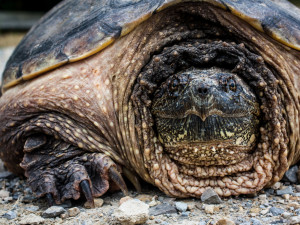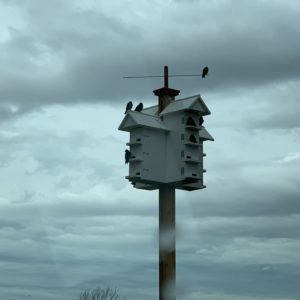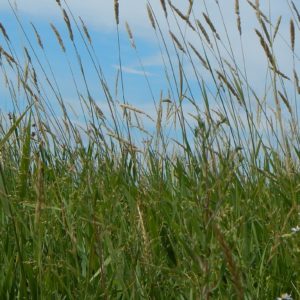Species Spotlight: Snapping Turtle
Get to know some of the species at risk in the Lac Deschênes IBA with the Species Spotlight, aka “Sp-Spot”. Today meet the: Common Snapping Turtle

Photo by Ken Fager
Scientific Name: Chelydra serpentina
SARA Status: Special Concern; Ontario: Special Concern
Taxonomic Group: Reptile
Size: Typically between 20.3 and 36 cm long, although the largest individual on record was 49.4 cm long.
Snapping turtles can inhabit any permanent freshwater bodies. They are omnivorous: they eat fish, mollusks, insects, birds, and even other reptiles and carrion. They also consume a large amount of vegetation, although they might simply be accidentally ingesting plant material while consuming other prey. Snapping turtles are ambush predators: they slowly crawl along the bottom or sit motionless waiting for their prey to come along.
The common snapping turtle does not bask so it is seldom seen in its aquatic environment. However, in the late spring and early summer, females can be seen out of the water looking for good nesting sites. Road gravel shoulders are a prime nesting sites for this species because these types of roadsides offer optimal temperatures for egg incubation. Therefore, females are often seen near or on roads. Males also come onto land when travelling between freshwater bodies.
Where Else Can You See This Species?
The common snapping turtle can be found in southern Canada and in the United-States all the way down to the Gulf of Mexico. Its range goes across the continent from the Atlantic Ocean to the Rocky Mountains.
Did you know?
• The snapping turtle is the second largest freshwater turtle species in North-America. Adult males are larger than females.
• Sex determination in eggs is controlled by the temperature of the nest. Eggs hatched at cooler temperatures tend to produce males, and those at higher temperatures, females. Global warming could therefore influence sex ratios in this species.
• These turtles are known to be quite vicious on land, but they are inoffensive while in the water. On land, they may strike perceived predators by opening their mouths and lunging forward repeatedly. They have a strong bite force and can injure people that are trying to carry them away from roads.
• They are economically important as they are harvested for human consumption. In Ontario, anyone with a regular fishing license can collect two snapping turtles per day. However, human consumption is not advisable because of the amount of contaminants that these turtles can accumulate in their tissues and because of their SARA status.
Check back every week to read about a different species at risk that can be found in Lac Deschênes.
You can report sightings of this and other rare species to the Canadian Wildlife Service at (819) 997-2800 or on the MNR Natural Heritage Information Centre website. A photo and a location are very helpful!
We would like to thank our guest blogger Julie Châteauvert for this post. Julie is a biologist from Gatineau Québec who is interested in herpetology and natural history.




